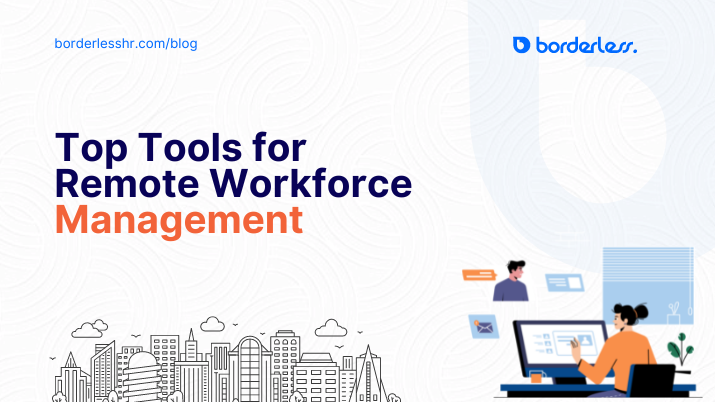Remote workforce management can be a challenge, but with the right resources, you can maximize efficiency and improve productivity. With this guide, you’ll learn effective strategies for successful remote workforce management, from creating clear communication protocols to inspiring team collaboration. As more and more companies adopt a remote workforce, managing employees who work from different locations has become increasingly important. It’s not just about managing tasks, but also keeping track of team productivity, ensuring clear communication, and monitoring employee engagement. Luckily, there are several tools available that can help you manage your remote workforce effectively.
Here are some of the top tools for remote workforce management:
Communication Tools
Communication is key when managing a remote workforce. There are several communication tools available to help you keep in touch with your team. Some of the most popular tools include Slack, Microsoft Teams, Zoom, and Skype. These tools allow you to hold virtual meetings, chat with team members, and share files. Slack for example is a great tool for unifying your remote workforce and creating an environment for collaboration and communication.
Create channels to keep all your conversations organized, and even use bots to automate task management and ensure everything stays on track. With a suite of powerful features, Slack makes it easy to stay connected with your team from anywhere in the world. You can create channels to share messages, files, and other content with your team members. You can also use Slack to set up video calls, voice calls, and screen sharing sessions. Plus, you can integrate Slack with a variety of third-party apps and services to get even more out of the platform. With Slack, you’ll be able to stay connected with your team no matter where they are.
Project Management Tools
When you have a remote workforce, it’s important to have a project management tool to keep track of tasks, deadlines, and progress. Some of the most popular project management tools include Trello, Asana, and Basecamp. These tools allow you to assign tasks, set deadlines, and monitor progress in real-time.
Asana for example is another great tool for remote workforce management. It allows you to easily create and manage tasks and projects, assign action points to team members, set due dates, and track progress in real-time. It’s also perfect for creating project plans that can be shared with everyone involved in the project. The project plan template is easy to use and can be customized to fit any project. It includes sections for tasks, resources, timelines, and budgets. You can also add notes and comments to each section. The template also includes a Gantt chart that allows you to track progress on the project. Using this template will help you stay organized and ensure that your project runs smoothly. You can invite external collaborators to join the discussion or integrate it with other existing tools you may already be using like Google Calendar or Slack.
Time Tracking Tools
Time tracking tools can be extremely useful in remote workforce management. When managing a remote team, it can be difficult to know exactly how much time employees are spending on specific tasks and projects. Time tracking tools like Toggl, Harvest, and RescueTime can help you keep track of the time spent on different activities, ensuring that your team is working efficiently and that you are paying them accurately.
These tools also allow you to see which tasks are taking up the most time, which can help you make adjustments to increase productivity. By using time tracking tools, you can monitor the progress of your team in real-time, make data-driven decisions, and ensure that your remote workforce is operating at peak performance. When managing a remote workforce, it’s important to keep track of employee hours. Time tracking tools like Toggl and Harvest allow you to track time spent on tasks and projects. This helps you ensure that your team is working efficiently and that you are paying them accurately.
Toggl is a popular time tracking tool that is great for remote teams. With Toggl, you can easily track the time spent on different tasks and projects. This helps you stay organized and ensures that you are paying your employees accurately. Toggl is also great for monitoring team productivity, as you can see how much time is being spent on each task. Additionally, Toggl has a user-friendly interface that is easy to navigate, making it a great choice for remote teams who are new to time tracking.
Employee Engagement Tools
Ensuring employee engagement is vital in any workforce, but it can be more difficult to achieve with remote teams. Nevertheless, employee engagement tools such as Officevibe and 15Five can prove helpful in keeping your remote workforce motivated and engaged. These tools allow you to send employee surveys and gather feedback, which helps you understand how your team is feeling and what adjustments you can make to improve their engagement.
These tools also help you track employee progress and performance, which can give you insight into how your team is functioning as a whole. By using employee engagement tools, you can foster a sense of community and collaboration within your remote team, which can help improve morale, reduce turnover, and increase productivity. Keeping your remote workforce engaged and motivated can be challenging. Employee engagement tools like Officevibe and 15Five allow you to send employee surveys and gather feedback. This helps you understand how your team is feeling and make adjustments to improve their engagement.
Officevibe for example is a tool that is used for employee engagement in remote workforce management. The platform helps managers to collect feedback and insights from employees on various aspects of their work, including company culture, communication, and teamwork. By gathering this feedback, managers can identify areas of improvement and take action to improve employee satisfaction and engagement. Additionally, Officevibe provides real-time analytics and reports, which helps managers to track engagement levels over time and identify trends. The platform also includes features like pulse surveys, one-on-one meetings, and goal setting, which helps to facilitate open and honest communication between managers and employees. Overall, Officevibe is a valuable tool for remote workforce management, as it can help to foster a positive company culture, improve employee satisfaction, and ultimately increase productivity and performance.
Cloud Storage Tools
Cloud storage tools like Google Drive and Dropbox are essential when managing a remote workforce. With these tools, employees can access files and documents from anywhere, at any time, which makes collaboration and communication more efficient. Additionally, cloud storage tools allow team members to work on the same documents in real-time, which can improve productivity and reduce the risk of errors. As remote teams often work across different time zones, cloud storage tools allow employees to work asynchronously, which enables them to work on their own schedules while still meeting project deadlines.
Finally, cloud storage tools provide a secure way to store and share files, which helps to protect sensitive company data from cyber threats. Overall, cloud storage tools are an essential component of remote workforce management, and can significantly improve collaboration, productivity, and security. When your team is working remotely, it’s important to have a cloud storage tool to share files and documents. Google Drive and Dropbox are two popular cloud storage tools that allow you to share files and collaborate in real-time.
G Suite for example is an essential tool for remote team management, allowing you to store documents in the cloud and share them easily with colleagues. It also provides easy-to-use drag-and-drop features to move files between folders, as well as collaboration tools that allow multiple users to work on the same document at once. You can even access G Suite from any device, giving you the flexibility to work from home or on the go. G Suite also offers a range of collaboration tools, such as Google Docs, Sheets, and Slides, which allow you to work together on documents in real time. You can also use Hangouts Chat to communicate with colleagues and customers. Plus, G Suite includes powerful security features that help protect your data from unauthorized access.
Cybersecurity Tools
Cybersecurity tools are crucial in remote workforce management. When employees are working remotely, they often use public Wi-Fi networks or their home internet, which can put your company’s data at risk. Cybersecurity tools like VPNs (Virtual Private Networks), firewalls, and anti-virus software can help protect your team from cyber threats. VPNs encrypt your team’s internet traffic and mask their IP address, which makes it more difficult for hackers to access your data. Firewalls and anti-virus software can help protect your company’s devices from malware and viruses. By using cybersecurity tools, you can ensure that your remote workforce is protected from cyber threats, and your company’s data remains secure.
This is especially important for companies that deal with sensitive information like financial data, customer data, or intellectual property. When your team is working remotely, cybersecurity becomes even more important. VPNs (Virtual Private Networks) like NordVPN and ExpressVPN provide secure connections for remote workers. This protects your team from cyber threats and keeps your company’s data safe.
NordVPN is a Virtual Private Network (VPN) that is used as a cybersecurity tool in remote management. When employees are working remotely, they often use public Wi-Fi networks to access the internet, which can put your company’s data at risk. NordVPN encrypts your team’s internet traffic and masks their IP address, which makes it more difficult for hackers to access your data. Additionally, NordVPN has servers located all around the world, which allows your remote team to access geo-restricted content and services. By using NordVPN, you can ensure that your remote workforce is protected from cyber threats and that your company’s data remains secure.
Conclusion
In conclusion, managing a remote workforce has become the norm for many companies, and having the right tools in place can make all the difference. As discussed, communication tools like Slack and Zoom, project management tools like Trello and Asana, time tracking tools like Toggl and Harvest, employee engagement tools like Officevibe and 15Five, cloud storage tools like Google Drive and Dropbox, and cybersecurity tools like NordVPN and ExpressVPN are all essential for managing a remote workforce. By using these tools, companies can ensure that their remote team remains productive, engaged, and connected. Additionally, partnering with companies like BorderlessHR can help you streamline the process of managing your remote workforce by providing end-to-end HR solutions that include hiring, onboarding, payroll, and compliance. With the right tools and partner, managing a remote workforce can be a seamless and successful experience for both the company and its employees.







